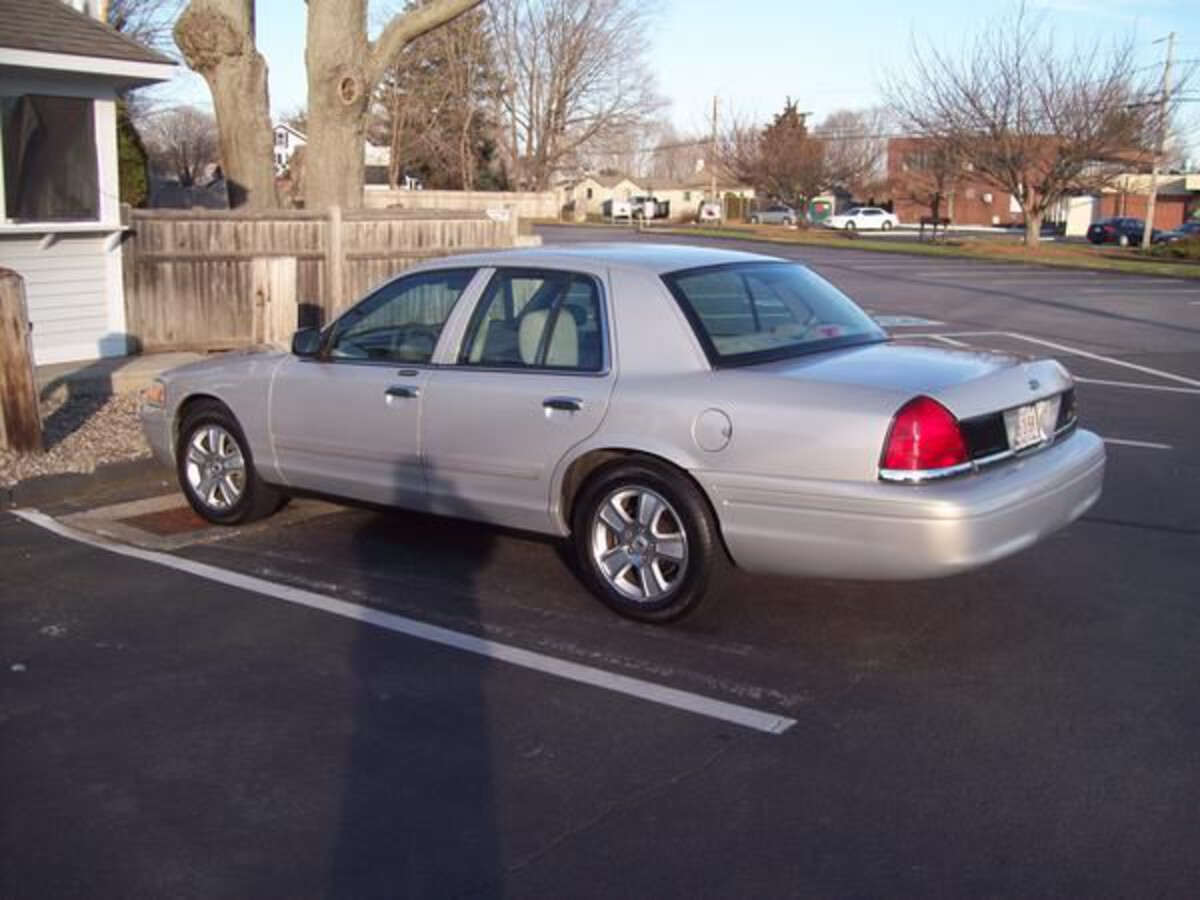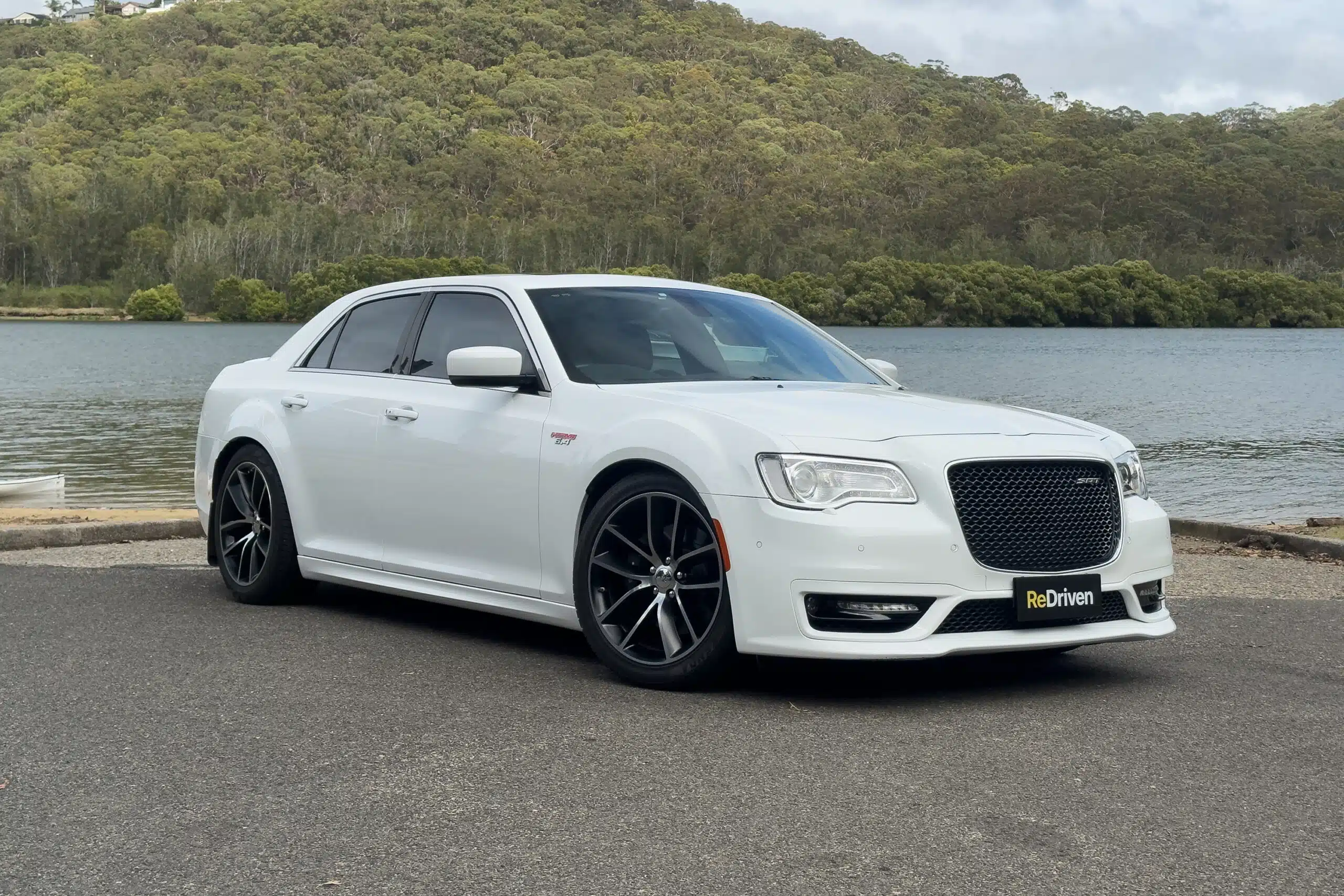For anyone who has ever popped the hood of their car to perform a simple repair or maintenance task—only to be met with a labyrinth of hoses, wires, and plastic shrouds—the importance of under-hood accessibility becomes immediately obvious.
While performance, design, comfort, and fuel efficiency often dominate discussions about what makes a good sedan, ease of maintenance is a frequently overlooked quality that can have a massive impact on both ownership experience and cost of upkeep. For home mechanics, DIY enthusiasts, and even seasoned professionals, a car’s engine bay can either be a cooperative space or an infuriating puzzle.
In today’s automotive market, sedans come with a wide variety of layouts, driven by competing priorities: maximizing passenger space, meeting stringent emissions standards, incorporating advanced safety features, and hitting performance targets.
Unfortunately, as engineers cram more technology and performance into ever-smaller packages, serviceability is often sacrificed. The result? Spark plugs buried beneath intake manifolds, alternators hiding behind engine mounts, and simple sensor replacements that require removing half the front clip. It’s a growing frustration for owners who don’t want to rely on dealerships for every minor issue—or who want to avoid labor costs that are inflated due to convoluted engine designs.
But not all sedans are guilty of this complexity. Some vehicles—whether by virtue of smart engineering, a spacious engine bay, or a simpler overall design—remain relatively easy to work on. These cars respect the mechanic’s time and tools.
They allow for straightforward repairs, reduced labor costs, and far less stress for those who prefer a hands-on approach to maintenance. Whether you’re replacing belts, changing spark plugs, swapping out the alternator, or diagnosing a coolant leak, these sedans make it possible without requiring a degree in engineering or a complete teardown.
This article explores ten sedans, split evenly into two categories. The first five are sedans that shine in terms of engine bay accessibility. These models represent thoughtful design choices where mechanical systems are logically arranged, key components are reachable, and routine maintenance doesn’t require an elaborate process.
The next five, in contrast, are examples of sedans where under-hood access is cramped, counterintuitive, or frustratingly complex—cars that will test your patience and your socket set. While some of these difficult designs are the result of technological advancement or high-performance targets, others are simply the outcome of poor packaging and prioritization.
It’s important to note that this analysis is based on broad patterns and common configurations, especially focusing on naturally aspirated four- and six-cylinder variants, which are most common in these vehicle lines. Trim levels and specific model years may vary slightly in layout, but the overall design philosophies tend to remain consistent across platforms.
Some sedans offer great accessibility in earlier generations, only to lose that benefit as the years and added tech weigh them down. Others maintain consistent mechanical logic throughout their production run, earning them favor with DIYers and professionals alike.
Ultimately, the goal of this article is not to shame complex cars nor idolize older, simpler ones. Instead, it’s to provide practical insights for those who value ease of maintenance, whether for cost-saving reasons, personal satisfaction, or simple curiosity.
When choosing a sedan, knowing what awaits under the hood can mean the difference between confidently handling your own maintenance or begrudgingly handing over hundreds of dollars for labor-intensive service work.
If you’re someone who sees value in a user-friendly engine bay, or if you simply want to know what kind of mechanical realities come with your sedan choice, read on. Let’s dig into the five sedans that make working under the hood a breeze—and the five that make you wish you hadn’t opened it in the first place.
Also Read: 5 SUVs With Factory-Installed Block Heaters and 5 Without Cold-Weather Prep
5 Sedans with the Best Under-Hood Accessibility

1. Honda Accord (especially early 2000s models)
The early 2000s Honda Accord (particularly the sixth and seventh generations, 1998–2007) exemplifies a well-balanced approach to both engineering and serviceability. Honda’s legendary K-series and F-series engines were designed not only with performance and reliability in mind but also with an understanding of real-world maintenance.
The engine bay is refreshingly open compared to more modern vehicles, with generous room between the engine block and surrounding components. This layout proves especially helpful for beginner-level mechanics attempting basic services like changing oil or spark plugs.
Beyond sheer space, what really makes the Accord shine is the logical layout of its components. The alternator, battery, fuse box, intake system, and serpentine belt are all easily accessible without having to remove other major components. The oil filter and drain plug are positioned in a way that reduces spillage and tool frustration, something even many newer cars fail to account for.
The radiator is front and center, and the fan assembly can often be removed with only a few bolts, making cooling system repairs more manageable. This clear separation of systems—electrical, fuel, air intake, and cooling—creates an environment where issues can be diagnosed and resolved without the feeling of untangling spaghetti.
The four-cylinder models (especially the 2.4L i-VTEC) are especially spacious. Even more impressive is how Honda ensured that V6 models, though more complex, still maintained a high degree of serviceability.
In many front-wheel-drive cars, V6 engines are stuffed into engine bays with minimal clearance near the firewall, but the Accord manages to retain acceptable access, particularly for jobs like replacing ignition coils or timing belts. Many parts can be reached from the top without lifting the car, a luxury not found in most other sedans of its era.
What adds to the Accord’s appeal is Honda’s design philosophy. The company has long prioritized intuitive service pathways, so much so that DIY communities often recommend Hondas as starter vehicles for people who want to learn car maintenance.
Their documentation is thorough, and parts are often shared across models and years, making repairs more consistent and parts more available. For these reasons, the Honda Accord is a benchmark for engine bay accessibility—proof that practical design doesn’t have to come at the expense of performance or reliability.

2. Toyota Camry (2002–2011)
When looking at the 2002–2011 Toyota Camry, it becomes clear that practicality and ease of service were core tenets of the design. With the XV30 and XV40 generations, Toyota engineers offered a sedan that was not just a family car, but also a model of clarity and openness under the hood.
Especially with the four-cylinder 2AZ-FE engine, space was abundant, allowing for tool access from multiple angles—something that simplifies nearly every under-hood task from air filter replacement to valve cover gasket changes.
One of the most praised aspects of these Camrys is the intelligent component grouping. For example, the fuse panel and battery are both conveniently located on the driver’s side near the front, clear of obstructions. The radiator, belts, and alternator have unimpeded visibility and access.
Spark plugs sit on top of the engine, visible the moment the hood is opened. This eliminates the need to remove other major components to do basic tune-ups, a feature that stands in stark contrast to many modern turbocharged or V6 engines with crowded upper manifolds and shrouding.
Even the optional 3.5L V6 engine (in the later XV40 Camrys) manages to maintain a decent level of accessibility. While the rear bank of spark plugs is predictably harder to reach due to the transverse layout, the intake manifold can be removed in under an hour with basic hand tools, thanks to minimal obstruction and clear bolt access.
The transmission dipstick, power steering fluid reservoir, and engine mounts are also all within reach—adding to the user-friendliness of this platform. Owners and mechanics alike frequently cite the Camry’s sensible engine bay as a cost-saving feature over the vehicle’s lifespan.
Not only does it reduce labor time, but it also makes preventive maintenance more feasible. For example, replacing a worn serpentine belt or faulty alternator is a job that can be tackled in a driveway in an hour or two.
In a world where engine bays are increasingly cluttered with layers of electronics and plastic, the Camry’s straightforward mechanical accessibility is both refreshing and admirable.

3. Ford Crown Victoria (1998–2011)
The Ford Crown Victoria stands as a relic of old-school American engineering that prioritized robustness and serviceability over compactness and complexity. Built on the Panther platform, the Crown Vic features a longitudinal engine layout with rear-wheel drive, which inherently offers better accessibility than many of today’s transverse-engine sedans.
The 4.6L Modular V8 under the hood has a spacious engine bay with wide-open gaps on both sides, underlining its utilitarian roots as a fleet and law enforcement vehicle. What truly sets the Crown Victoria apart is the incredible ease of access to nearly every major component.
Changing spark plugs? Straightforward and tool-friendly. Swapping out the water pump or timing components? There’s no need to disassemble half the engine bay to get to them.
The power steering pump, AC compressor, and alternator are all front-facing and clearly visible. Even the serpentine belt can be changed in under 15 minutes with basic tools and minimal disassembly. This is the kind of car where a complete engine swap can realistically be performed by two people in a home garage over a weekend.
Another notable feature is the vehicle’s old-school layout. Unlike many newer cars, the Crown Vic uses traditional, analog controls and fewer integrated electronics. This not only makes diagnostics simpler but also means that you won’t be spending hours trying to trace electrical issues through a rat’s nest of wires.
The PCM (Powertrain Control Module) and other key elements are positioned with accessibility in mind, allowing mechanics to work efficiently, especially when speed and simplicity are critical.
This design makes sense given the Crown Vic’s real-world applications. Taxi fleets, police departments, and government agencies depended on quick turnaround for maintenance and repairs. A car out of commission for even a day could mean lost productivity or compromised safety.
Ford designed the Crown Vic to ensure components could be replaced quickly and easily, minimizing downtime. Today, that legacy lives on among enthusiasts and budget-minded owners who appreciate the simplicity and roominess of this well-engineered sedan.

4. Chevrolet Malibu (2004–2008)
The 2004–2008 Chevrolet Malibu represents a point in time when General Motors was refocusing on building vehicles that offered a balance of affordability and mechanical transparency.
Though not a performance icon, this generation Malibu features an under-hood layout that’s genuinely user-friendly, especially in the four-cylinder versions using the Ecotec 2.2L engine. The layout is orderly, with clear paths to major service components and a lack of excessive plastic covers or convoluted bracketry.
One major highlight is the top-mounted ignition coil pack and spark plug access. Unlike some competitors that bury plugs beneath intakes or plastic trim, the Malibu allows you to change plugs in under 30 minutes with minimal tools. The air intake, throttle body, and mass airflow sensor are all easily reachable from the front, as are the oil filter and housing.
Even the serpentine belt routing is straightforward, and the tensioner can be reached without removing other components. This clarity contributes significantly to reduced maintenance labor costs and frustration.
While the 3500 V6 option adds a bit more complexity, it still maintains fair accessibility. Some tight spots exist, especially around the rear bank of cylinders, but even these are manageable thanks to the engine’s orientation and the minimal use of shielding and cross-bracing.
Tasks like thermostat replacement or coolant hose swaps don’t require major disassembly, and many of the components are modular and positioned in logical sequences.
Perhaps most importantly, this Malibu wasn’t over-engineered. There’s a mechanical honesty in its design—it’s not trying to be a tech-laden marvel, but rather a functional car that can be kept running by average owners.
That simplicity translates to lower ownership costs and greater confidence for those tackling weekend repair jobs. For anyone looking for a dependable and accessible sedan that won’t leave them scratching their head every time the check engine light comes on, this generation Malibu is a quiet winner.

5. Subaru Legacy (2005–2009)
The 2005–2009 Subaru Legacy, especially in non-turbocharged trims, offers a unique take on accessibility due to its horizontally opposed engine layout. While Subaru’s boxer engines have their quirks, this layout also provides inherent advantages, especially in terms of lateral engine bay space.
Unlike vertical engines that rise up toward the hood, Subaru’s flat-four keeps the bulk of its mass low and wide, creating ample clearance along the top of the bay and a surprisingly user-friendly service environment.
One immediately noticeable benefit is the accessibility of the top-mounted components. The airbox, battery, brake master cylinder, and fuse panel are all arranged around the periphery of the engine and are easy to reach.
The oil filter is located on top of the engine in later models, making oil changes extremely quick and tidy. Even the alternator and power steering components are front-facing, reducing the need to snake tools around awkward angles or remove protective trim.
Spark plugs in Subaru engines are positioned laterally, and while some complain about the fender clearance, it’s still entirely feasible to change them without lifting the engine or removing other parts. A socket extension and some patience are usually all that’s needed.
Compared to V6 engines from other manufacturers that require intake manifold removal just to access the rear bank of plugs, Subaru’s design is quite friendly. Timing belts on these models are also relatively straightforward to replace, with clear access to pulleys once the radiator fans are removed.
Subaru also makes it a point to keep wiring harnesses neat and logically routed. While turbocharged versions of the Legacy do add complexity with intercooler plumbing and heat shielding, the non-turbo 2.5i models remain ideal for owners who want all-wheel drive with an approachable engine layout.
Overall, the 2005–2009 Legacy is a prime example of how thoughtful engineering can blend complexity and serviceability into a rewarding ownership experience.
5 Sedans with the Most Crowded Engine Bays

1. Chrysler 300 (2005–2023, especially V6 models)
The Chrysler 300, with its bold styling and spacious interior, makes a strong first impression—but once you open the hood, especially on V6 models like the 3.5L and Pentastar 3.6L engines, the situation quickly deteriorates.
The engine bay is packed from fender to fender and firewall to radiator, with minimal room to reach critical components. Although the car’s exterior is large, the packaging under the hood feels excessively tight, leaving very little clearance for both tools and hands.
One of the most frustrating aspects of the Chrysler 300’s engine bay is the positioning of the rear bank of cylinders on the V6. Accessing the spark plugs on the rear side often involves removing the upper intake manifold—a multi-hour task that includes disconnecting sensors, fuel lines, and vacuum hoses.
Even routine maintenance, like changing the thermostat or the alternator, can turn into a drawn-out ordeal, requiring removal of surrounding components that seem to be stacked like a game of Jenga. Mechanics often complain that the design sacrifices long-term serviceability in favor of cramming modern tech and aesthetics into a dated platform.
Additionally, the engine cover and plastic shrouding—while visually tidy—hide a mess of vacuum lines and connectors that are tightly nested together. Electrical harnesses snake through awkward corners, often running directly over components like the valve cover or coil packs.
Getting access to simple sensors or bolts can sometimes require the removal of multiple unrelated parts. This excessive complexity leads to inflated labor times and higher repair bills, even for minor issues.
From a diagnostic standpoint, the tightly packed design also increases the risk of accidental damage during service. Dislodged connectors, pinched wires, and cracked plastic housings are frequent outcomes when maneuvering around such a crowded layout.
While the HEMI V8 versions offer marginally more working space, they’re still far from ideal. The Chrysler 300’s engine bay is a classic case of form over function—attractive from the outside, but a cramped, frustrating maze once you lift the hood.

2. BMW 5 Series (E60, 2004–2010)
The BMW E60 5 Series may offer a refined driving experience and advanced features for its time, but anyone who’s turned a wrench on one knows the pain of its engine bay layout. Whether you’re dealing with the inline-six engines like the N52 or N54 (turbocharged), or the more complex V8s, under-hood accessibility is a nightmare of overengineering, layered systems, and proprietary design choices that are anything but DIY-friendly.
BMW’s emphasis on luxury and performance in this era led to highly integrated mechanical and electronic systems. In turbocharged models like the 535i, the engine bay is stuffed with heat shielding, vacuum actuators, intake piping, and tight bends of coolant and oil lines.
Reaching basic components like the turbos, which are mounted low and toward the back of the engine, requires removing several other parts—including possibly the entire subframe in extreme cases. Even a simple oil filter change involves threading around coolant hoses and sensor wiring that obstruct the top-mounted housing.
Another major headache is the placement of electronic modules and plastic coolant components. BMW’s love for plastic parts means that many of these systems are fragile, yet buried beneath other components, making them easy to break while attempting unrelated repairs.
The water pump, for example, is electronically controlled and tucked deep behind the front axle area—requiring hours of labor and contortions just to access. Don’t even ask about doing a valve cover gasket job; on turbo models, it’s an all-day task involving removal of intake and fuel components.
What exacerbates the problem is the lack of intuitive design. Hose clamps are rotated in awkward directions, connectors are hidden behind sharp brackets, and fasteners are often hidden in dark corners only reachable with specialty tools. Even trained mechanics find themselves needing to consult repair manuals or scan tools just to reset components after service.
The E60’s cramped, overly complex engine bay is a direct result of prioritizing performance and luxury over accessibility, making it one of the most difficult sedans to service for any task more involved than a basic oil change.

3. Audi A6 (C6, 2005–2011, especially 3.0T and V6 models)
The Audi A6 from the C6 generation is another premium sedan that hides a complex and deeply frustrating under-hood environment beneath its elegant exterior.
With its longitudinal engine layout and front-biased all-wheel-drive system, Audi has to fit a large engine, cooling components, and driveline systems into a fairly constrained space. The result is an engine bay that is not just crowded—it’s also layered and obscured, making even routine jobs a logistical puzzle.
The 3.0T supercharged V6 found in many A6 models is especially tight. The supercharger itself sits on top of the engine, limiting access to anything beneath. The throttle body and PCV system are buried under layers of intake runners and coolant piping, meaning any job involving gaskets, sensors, or hoses quickly becomes a multi-hour ordeal.
The serpentine belt and pulleys are practically blocked off by the cooling fans and front structure, often requiring removal of the entire front fascia—commonly known in Audi circles as putting the car into “service position.”
Spark plug replacement is another task that should be simple but isn’t. The coil packs are easy enough to see, but actually pulling them without disassembling surrounding piping and engine covers is a challenge. Audi’s commitment to covering every inch of the engine in plastic only adds to the difficulty, turning what should be a 30-minute job into a 2–3 hour process.
The battery, often located in the trunk, also complicates electrical diagnostics since jump points and fuse locations are scattered and sometimes poorly labeled.
Moreover, Audi uses extensive vacuum and electronic controls for things like intake manifold flaps, emissions components, and throttle control. These are frequently routed in convoluted ways, with tiny, fragile clips and connectors buried behind other systems.
Replacing a simple PCV valve can mean unbolting half the intake system. For professional shops, this level of difficulty means high labor hours; for DIYers, it often means giving up. The A6 is the definition of German engineering excellence—and the cost of that excellence is an engine bay that punishes even experienced mechanics.

4. Cadillac CTS (2008–2014, especially 3.6L V6)
The second-generation Cadillac CTS, especially with the 3.6L V6 engine (either naturally aspirated or direct-injected versions), is notorious for its convoluted engine bay.
While the vehicle aimed to compete with European sedans in luxury and performance, GM’s engine packaging choices resulted in one of the more frustrating layouts in any American sedan of that era. It looks clean on top but is incredibly cramped once you try to do any real work.
One of the biggest issues is that nearly every serviceable component is surrounded by overlapping systems. The intake manifold is massive and takes up the entire top portion of the engine.
Underneath it lies the fuel rail, knock sensors, and a labyrinth of vacuum lines and coolant hoses. Just getting to the rear cylinder bank for basic spark plug replacement requires removal of the manifold—something that quickly deters even seasoned DIYers. This job alone can take several hours and includes the risk of damaging gaskets or sensors.
The cooling system is another area of concern. The water pump is deeply embedded in the front of the engine and is surrounded by a jungle of drive belts, tensioners, and brackets. Replacing it is not impossible but involves a surprising amount of disassembly.
On direct-injection models, the high-pressure fuel pump is tightly nestled between the firewall and intake manifold, which not only makes it hard to reach but also adds to the complexity due to high-pressure lines and sensitive sensors.
Additionally, the engine bay is full of sharp edges and tight crevices, meaning scraped knuckles and dropped tools are part of nearly every job. Plastic wire looms and brittle connectors—particularly after a few years of engine heat—often crumble or snap, further compounding problems.
Even accessing the oil filter, which should be simple, requires maneuvering around tightly-packed hoses and suspension components from underneath the vehicle. While the CTS drives well and offers a premium feel, its engine bay tells a different story: one of frustration, high labor costs, and a clear lack of maintenance-minded engineering.

5. Mazda6 (2009–2013, 3.7L V6 models)
The second-generation Mazda6, especially when equipped with the 3.7L V6 engine, presents a classic example of what happens when an engine is too big for the space provided.
This engine, shared with larger vehicles like the Ford Edge and Mazda CX-9, is shoehorned into a relatively compact engine bay that leaves virtually no room to perform even the most basic maintenance tasks without extensive labor and clever tool use.
One of the biggest offenders is the layout of the rear bank of spark plugs. Due to the transverse engine mounting, the rear bank is completely obstructed by the upper intake manifold and the firewall.
To even glimpse the plugs or coils, you must remove the manifold, unbolt several brackets, and often disconnect fuel lines. This means that something as simple as a tune-up turns into an intimidating job, complete with the risk of vacuum leaks or breaking plastic sensors during reassembly.
Heat management is also a problem. The V6 generates considerable thermal load, yet the cramped engine bay provides minimal airflow and leaves little space between hot engine components and delicate plastic parts.
Over time, this leads to premature degradation of wiring harnesses, vacuum lines, and seals. It’s not uncommon for owners to report repeated failures of coil packs or coolant sensors simply because of how inaccessible and heat-exposed they are.
Another challenge lies in the power steering and alternator placement. Both are buried low and surrounded by tight brackets and engine mounts, requiring a good amount of disassembly to even inspect.
If a belt needs replacing, you’re in for a fight—removing tension often involves awkward angles and specialty tools. Combine this with a lack of top-side visibility, and even routine belt or pulley maintenance becomes a prolonged and frustrating process.
Ultimately, the 3.7L Mazda6 may offer spirited performance and a good driving feel, but it is deeply compromised in terms of serviceability. The engine simply doesn’t fit the car well, and mechanics who work on them frequently mention that jobs that should take 30 minutes often balloon into multi-hour nightmares.
For anyone planning to keep their car long-term or do their own maintenance, this Mazda6 is a cautionary tale about choosing performance without considering under-hood practicality.
Also Read: Top 10 Most Reliable Used Cars You Can Buy for Under $10,000 in 2025
As we close the hood on this comprehensive look into under-hood accessibility among sedans, one thing becomes abundantly clear: serviceability still matters. In an age dominated by high-tech features, performance bragging rights, and luxury enhancements, the basic ability to reach and repair your vehicle’s components remains an essential, if underappreciated, aspect of car ownership.
Whether you’re a dedicated DIY mechanic or someone who simply wants to keep repair costs manageable, engine bay accessibility can have a direct impact on your satisfaction with a car over time. The sedans we explored in the first half of this article—cars like the Honda Accord, Toyota Camry, and Ford Crown Victoria—illustrate how thoughtful engineering can simplify ownership.
These vehicles provide logical layouts, enough room to work without unnecessary disassembly, and a level of consistency that makes even novice repair work achievable. They respect the user, acknowledging that cars inevitably require maintenance and that not every owner wants to be held hostage by dealership service departments or exorbitant labor charges. These sedans often retain their value not just in the resale market, but in the trust they build with their owners over years of relatively stress-free upkeep.
On the flip side, we’ve also looked at sedans that represent the polar opposite. Vehicles like the BMW E60 5 Series, Chrysler 300, and Mazda6 with the 3.7L V6 are prime examples of performance and aesthetics taking precedence over practicality.
These cars may drive beautifully or offer luxurious interiors, but their cramped, cluttered engine bays are full of overlapping systems, fragile components, and designs that seem to actively resist user intervention. Service positions, plastic intake manifolds, buried sensors, and heat-trapping packaging turn even minor jobs into multi-hour projects—and that’s if you have the right tools, patience, and experience to tackle them.
It’s easy to argue that complexity is a natural consequence of technological advancement. And to an extent, that’s true. Modern vehicles are safer, faster, cleaner, and more efficient than ever before. But that doesn’t mean complexity has to come at the cost of accessibility. There are examples—like the Subaru Legacy and older Chevy Malibu—that blend updated engineering with relatively manageable service pathways. It’s not about refusing progress—it’s about integrating it responsibly.
Automakers would do well to remember that cars are not disposable appliances. They are long-term investments, and many owners plan to keep them well past the manufacturer’s warranty period. In that regard, designing with the end-user in mind—whether that user is a professional technician or a hobbyist—is a gesture of respect. It builds brand loyalty, reduces overall maintenance costs, and can turn an average sedan into a trusted workhorse for years or even decades.
For consumers, awareness is key. If you’re shopping for a used sedan or considering a new purchase, don’t just look at horsepower figures or infotainment features. Pop the hood. Check how accessible the battery is. Look at the spark plugs. See if the belts are reachable.
Ask a mechanic about labor times for common repairs. What you find (or don’t find) might very well change your decision—or at least help you prepare for the real costs of ownership down the road.
In the end, a car is only as good as your ability to maintain it. A beautifully engineered powertrain loses its charm when it costs thousands just to replace a thermostat. Conversely, a modest four-cylinder engine in a well-laid-out bay might provide years of reliable, low-cost service.
If you’re someone who values control, affordability, and mechanical simplicity, understanding under-hood accessibility isn’t just helpful—it’s essential.
So whether you’re under the hood by necessity or by passion, remember: not all sedans are created equal. Some are your partners in maintenance, while others are obstacles. Choose wisely.
